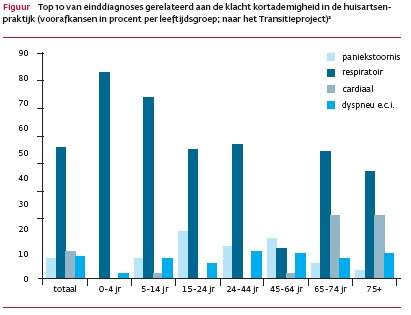Plots Zweten
- Scatter plots
- Histogram and density plots
The function qplot() [in ggplot2] is very similar to the basic plot() function from the R base package. It can be used to create and combine easily different types of plots. However, it remains less flexible than the function ggplot().
This chapter provides a brief introduction to qplot(), which stands for quick plot. Concerning the function ggplot(), many articles are available at the end of this web page for creating and customizing different plots using ggplot().
The data must be a data.frame (columns are variables and rows are observations).
The data set mtcars is used in the examples below:
Plots in Ch can be generated from data arrays or files, and can be displayed on a screen, saved as an image file in different file formats, or output to the stdout stream in a proper image format for display in a Web browser through a Web server. The list of supported file formats can be found here. Plots in Ch can be generated from data arrays or files, and can be displayed on a screen, saved as an image file in different file formats, or output to the stdout stream in a proper image format for display in a Web browser through a Web server. The list of supported file formats can be found here. ZPlot® for Windows is the most powerful and flexible software tool for control of Scribner Associates Inc. And Solartron Analytical frequency response analyzers. The widest variety of experimental techniques are supported for all types of impedance applications.
mtcars : Motor Trend Car Road Tests.
Description: The data comprises fuel consumption and 10 aspects of automobile design and performance for 32 automobiles (1973 - 74 models).
Format: A data frame with 32 observations on 3 variables.
- [, 1] mpg Miles/(US) gallon
- [, 2] cyl Number of cylinders
- [, 3] wt Weight (lb/1000)
A simplified format of qplot() is :

- x : x values
- y : y values (optional)
- data : data frame to use (optional).
- geom : Character vector specifying geom to use. Defaults to “point” if x and y are specified, and “histogram” if only x is specified.
- xlim, ylim: x and y axis limits

Other arguments including main, xlab, ylab and log can be used also:
Plots Zweten In Excel
- main: Plot title
- xlab, ylab: x and y axis labels
- log: which variables to log transform. Allowed values are “x”, “y” or “xy”
Note that, the stat and position arguments to qplot() have been deprecated since ggplot2 version 2.0.0.
Basic scatter plots
The plot can be created using data from either numeric vectors or a data frame:
Scatter plots with smoothed line
The option smooth is used to add a smoothed line with its standard error:
To draw a regression line, read the following article: ggplot2 scatter plot
Smoothed line by groups
The argument color is used to tell R that we want to color the points by groups:
Change scatter plot colors
Points can be colored according to the values of a continuous or a discrete variable. The argument colour is used.

Plots Zweten Vs
Note that you can also use the following R code to generate the second plot :
Change the shape and the size of points
Like color, the shape and the size of points can be controlled by a continuous or discrete variable.
Scatter plot with texts
The argument label is used to specify the texts to be used for each points:
PlantGrowth data set is used in the following example :
- geom = “boxplot”: draws a box plot
- geom = “dotplot”: draws a dot plot. The supplementary arguments stackdir = “center” and binaxis = “y” are required.
- geom = “violin”: draws a violin plot. The argument trim is set to FALSE
Change the color by groups:
The histogram and density plots are used to display the distribution of data.
Generate some data
The R code below generates some data containing the weights by sex (M for male; F for female):
Density plot
This analysis was performed using R (ver. 3.2.4) and ggplot2 (ver 2.1.0).
Show me some love with the like buttons below... Thank you and please don't forget to share and comment below!!
Montrez-moi un peu d'amour avec les like ci-dessous ... Merci et n'oubliez pas, s'il vous plaît, de partager et de commenter ci-dessous!
Recommended for You!
More books on R and data science
Recommended for you
This section contains best data science and self-development resources to help you on your path.
Coursera - Online Courses and Specialization
Data science
- Course: Machine Learning: Master the Fundamentals by Standford
- Specialization: Data Science by Johns Hopkins University
- Specialization: Python for Everybody by University of Michigan
- Courses: Build Skills for a Top Job in any Industry by Coursera
- Specialization: Master Machine Learning Fundamentals by University of Washington
- Specialization: Statistics with R by Duke University
- Specialization: Software Development in R by Johns Hopkins University
- Specialization: Genomic Data Science by Johns Hopkins University
Popular Courses Launched in 2020
- Google IT Automation with Python by Google
- AI for Medicine by deeplearning.ai
- Epidemiology in Public Health Practice by Johns Hopkins University
- AWS Fundamentals by Amazon Web Services
Trending Courses
- The Science of Well-Being by Yale University
- Google IT Support Professional by Google
- Python for Everybody by University of Michigan
- IBM Data Science Professional Certificate by IBM
- Business Foundations by University of Pennsylvania
- Introduction to Psychology by Yale University
- Excel Skills for Business by Macquarie University
- Psychological First Aid by Johns Hopkins University
- Graphic Design by Cal Arts
Books - Data Science
Our Books
- Practical Guide to Cluster Analysis in R by A. Kassambara (Datanovia)
- Practical Guide To Principal Component Methods in R by A. Kassambara (Datanovia)
- Machine Learning Essentials: Practical Guide in R by A. Kassambara (Datanovia)
- R Graphics Essentials for Great Data Visualization by A. Kassambara (Datanovia)
- GGPlot2 Essentials for Great Data Visualization in R by A. Kassambara (Datanovia)
- Network Analysis and Visualization in R by A. Kassambara (Datanovia)
- Practical Statistics in R for Comparing Groups: Numerical Variables by A. Kassambara (Datanovia)
- Inter-Rater Reliability Essentials: Practical Guide in R by A. Kassambara (Datanovia)

Others

- R for Data Science: Import, Tidy, Transform, Visualize, and Model Data by Hadley Wickham & Garrett Grolemund
- Hands-On Machine Learning with Scikit-Learn, Keras, and TensorFlow: Concepts, Tools, and Techniques to Build Intelligent Systems by Aurelien Géron
- Practical Statistics for Data Scientists: 50 Essential Concepts by Peter Bruce & Andrew Bruce
- Hands-On Programming with R: Write Your Own Functions And Simulations by Garrett Grolemund & Hadley Wickham
- An Introduction to Statistical Learning: with Applications in R by Gareth James et al.
- Deep Learning with R by François Chollet & J.J. Allaire
- Deep Learning with Python by François Chollet
Want to Learn More on R Programming and Data Science?
Follow us by EmailOn Social Networks:
Click to follow us on Facebook and Google+ :
Comment this article by clicking on 'Discussion' button (top-right position of this page)